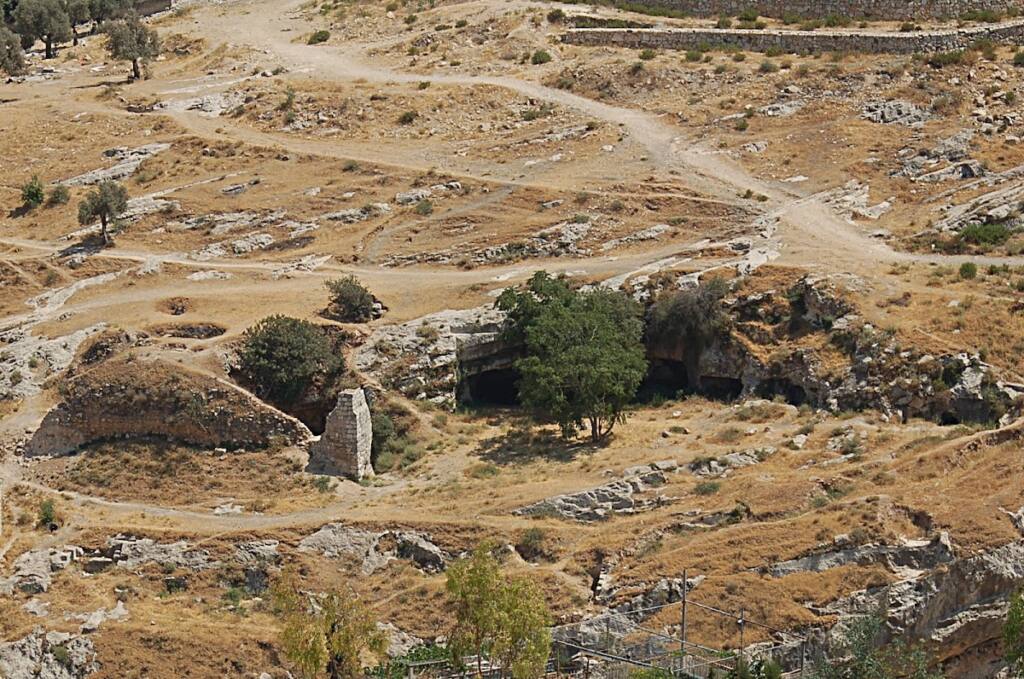
WelCom June/July 2022
The following article is the second of two presentations by Br Kieran Fenn fms about why the Scriptures were written and the context in which they were written. The first article: ‘The ABC of the Gospels’ – being the implications of every Gospel written as post-Resurrection inspired documents – was published in WelCom, April 2022. This second article takes us to the end point (XYZ) of the Gospels, ‘the issue of the necessity of seeing what issues are of salvation for us.’
The death of Judas

As we consider the differences between the Gospels, we find many other areas that the Church had to face up to. One that comes to mind is the death of Judas. We have two texts on the topic, Matthew and Luke, with the former being the better known. Judas receives his 30 pieces of silver, betrays his Master, then returns to throw the money in the Temple, and goes off to hang himself. As blood money, the coins cannot be placed in the Temple coffers but are used to buy the potter’s field [paupers’ grave or place for the burial of unknown], as a place to bury foreigners (not Jews!). Its name as ‘Field of Blood’ comes from the price of its purchase with blood money.
Behind this account lies a multitude of Old Testament quotations. Zechariah 11:12-13 is the source of 30 pieces of silver, as does throwing down the coins. Most interesting is the only suicide in the Old Testament, that of Ahithophel, who also betrayed his master, King David, then hanged himself when he saw what would happen, [2 Sam 17].
Luke [Acts 1:15-20], gives us another account of the death of Judas. Judas used the money to buy a field, with what would be more than thirty pieces of silver. Inspecting the field he fell headlong, probably over a cliff, with gory details of his belly bursting asunder. Now, the Field of Blood gets its name because the blood of Judas was shed there. Artists get into the story by painting a tree and it leans over a cliff, so Judas can hang himself, the rope breaks, he falls to burst asunder and the two accounts are mingled to make everybody happy.
We even have a third account from Papias, that in strolling around the marketplace, a considerably enlarged Judas has his belly ripped open by a cart and dies. Given such differences let us ask what unites them as this is a better approach. Each text makes the point that Judas did not live to enjoy the fruits of his betrayal.

Facing the issue of differences between texts
The Church faced the issue of the differences between texts and came up with the statement: ‘The Books of Scriptures must be acknowledged as teaching firmly, faithfully, and without error, that truth which God wanted put into the Sacred Writings for the sake of our salvation’ [Vatican II Document on Inerrancy Dei Verbum 1965]. Clearly, how Judas died is not a truth important for my salvation.
Look at Mark 15:25 where Jesus is crucified at the third hour of the day, nine o’clock in the morning. This indicates that Jesus was six hours on the cross. Mark tells his Passion with a neat emphasis on threes. Probably the three hours of Supper, in the Garden with three disciples to whom Jesus came back three times on the hour and found them sleeping (in Luke only one return!), Jesus’ prophecy of Peter’s threefold denial, the threefold mockeries on the cross, the three hours of darkness, and the death at the ninth hour, three o’clock.
Everything arranged is under the power of God
What message is Mark getting across other than on this: the most solemn of days, everything arranged is under the power of God. Other Gospels will tell their story with different details, but the issue is not how long Jesus was on the Cross, but that he was on the Cross.
The two most vital points I have stressed in these two articles are:
- The ‘ABC of the Gospels’ being the implications of every Gospel written as post-Resurrection inspired documents reflecting the three stages by which the Gospels came into being, critical for understanding the differences between them.
- In this article, the ‘XYZ of the Gospels’ with its emphasis that out of all the differences, what are the truths contained in the Gospels that contribute to human salvation?
Kieran Fenn’s articles: ‘ABC and XYZ of the Gospels’, written for the Methodist quarterly, Word and Worship, have been republished in WelCom with permission. Kieran is a scholar with expertise on the Word of God and has spent several years in Adult Education teaching Scripture in New Zealand and abroad.
According to the Gospels the arrest of Jesus at Gethsemane was made possible by the betrayal of one of his disciples, Judas Iscariot. The Gospel of Matthew records the remorse of Judas when Jesus was condemned to death:
When Judas, who had betrayed him, saw that Jesus was condemned, he was seized with remorse and returned the thirty pieces of silver to the chief priests and the elders. ‘I have sinned,’ he said, ‘for I have betrayed innocent blood.’ ‘What is that to us?’ they replied. ‘That’s your responsibility.’ So Judas threw the money into the temple and left. Then he went away and hanged himself. – Matt 27:3-5.
The High priests then decided to buy a burial plot with that money:
The chief priests picked up the coins and said, ‘It is against the law to put this into the treasury, since it is blood money.’ So they decided to use the money to buy the potter’s field as a burial place for foreigners. That is why it has been called the Field of Blood to this day. – Matthew 27:6-8
The Books of Scriptures must be acknowledged as teaching firmly, faithfully, and without error, that truth which God wanted put into the Sacred Writings for the sake of our salvation.”
Vatican II Document on Inerrancy Dei Verbum 1965.